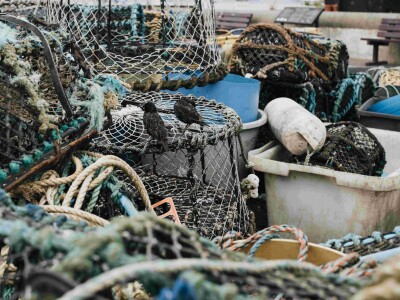People for the Ethical Treatment of Animals (PETA) made a big splash this week after releasing a video it claims was taken at a Maine lobster processing plant. The video, which was allegedly shot undercover at Linda Bean's Maine Lobster in Rockland, shows a lobster being pulled apart, its shell and tail ripped off while still alive, its legs still moving.
Following the video's release PETA announced it would be filing a criminal complaint. The animal rights group might be able to make a case for animal cruelty under Maine law, which states that it is a crime to kill an animal "by a method that does not cause instantaneous death."
But what does this mean for the industry? The treatment of crustaceans — and whether they can feel pain — is an issue that has come up before. In 2006 Whole Foods announced it would no longer carry live lobsters in its stores. Today Portland, Maine, is the only store in the nationwide chain that sells live lobsters because it is close enough to where lobsters are landed to ensure they are handled with care during shipping and processing. When you buy a lobster there you can have it killed humanely by asking a seafood counter staff person to electrocute it in the back room (you'll want to cook it soon after).
Whether it makes any difference to the lobster continues to be debated. Some say no, like a February 2005 study by a University of Oslo scientist who concluded that lobsters and other decapod crustaceans “have some capacity of learning, but it is unlikely they can feel pain.”
The Maine lobster industry agrees with those findings. “There’s been a lot of research done on this that shows lobsters have a very simple nervous system. It’s comparable to a bug or insect. It’s very unlikely to feel pain,” says Marianne LaCroix, acting executive director of the Maine Lobster Promotion Council when I talked to her about this subject for an article in SeaFood Business earlier this year.
But animals rights groups can point to research that shows a different story. While Prof. Robert Elwood of Queens University in Belfast, Ireland, admits it's impossible to prove if animals can feel pain, he believes the behavior of crabs in a study he released this year is consistent with the "idea of pain." In the study, crabs that had been shocked twice after running to a dark shelter chose a different shelter, rather than risk being shocked again.
But, as LaCroix pointed out, this issue is not likely to have much fallout for the industry. There are always exceptions to the rule of course, but those who care about whether an animal feels pain as it's being prepared for our consumption aren't usually the ones eating seafood in the first place.






